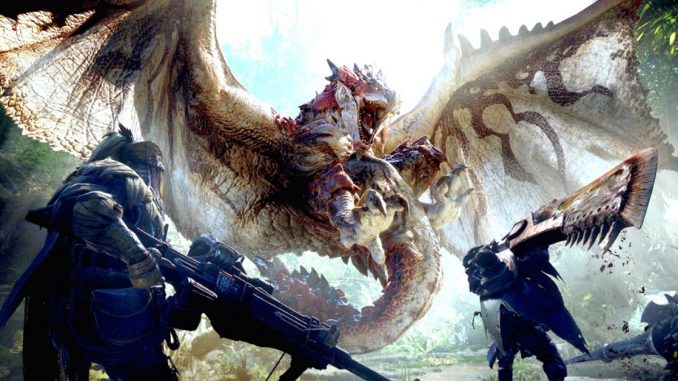
I have always subscribed to the idea that almost every game has something to teach you as you play it. Whether it is sharing a philosophical world view with games like ‘Spec Ops: The Line’(YAGER and Darkside Game Studios, 2012), that actively challenge the player to think about their morality behind their actions throughout the story of a trio of military personnel fighting for their lives in Dubai, to smaller titles that try to teach you more personal lessons. An example of this would be through the use of incredibly interesting and infuriating gameplay, ‘Bennett Foddy’s Getting Over’ (Foddy, 2017)It teaches the player that failure is a part of living and should be embraced rather than avoided.
With this, you’re probably wondering how does this information tie into foresight? Well, almost all games require careful foresight, overcoming challenges in a game is what players aspire towards and being able to provide the player with the necessary information to plan ahead to achieve their goals.
Keep in mind that this isn’t me telling you how to create games with teaching foresight in mind, this is just some of the observations of a nerdy chap who has played plenty of games that happen to make me think carefully about my decisions and I just wanted to share them with you lovely readers.
First things first, what is foresight and how to grasp it
According to the Cambridge dictionary foresight is described as “the ability to judge correctly what is going to happen in the future and plan your actions based on this knowledge”. (FORESIGHT | meaning in the Cambridge English Dictionary, 2021).
I always found foresight to be a very tricky thing to teach people how to improve upon, it simply comes down to experience in the particular activity that you’re taking part in, which is gained by taking part in an activity or task over a certain period of time, where you are able to fully absorb the information that is being presented or hidden from you, causing you to plan your next move accordingly.
Ultimately, improving your ability to plan ahead comes down to trial and error, with certain tasks requiring more foresight than others (e.g., Planning a wedding compared to deciding what you want for dinner, totally different ballparks.)
I’m sure that there are many different tutorials that will try to teach you some ways of improving upon your skills in planning ahead, but it is incredibly subjective in regards to the tasks and activities that you’re taking part in, especially if they happen to be complicated in their execution. As the old saying goes, Practise makes perfect.
How can this be adapted in games?
The main things that need to be decided upon when creating a game would be what kind of information does the player need in order to accomplish their goal and how you will present this to the players?
What type of information that the player need is a rather tricky question to give an answer to as it heavily depends on the type of experience that the game is offering the player. This is due to different genres of games requiring the player to keep track of differing amounts of information depending on the genre of the game they’re playing. For example, real time strategy games like those from the Age of Empires series would need to share a much larger amount of information to the player (Things like player and enemy unit locations, their health, what they can build, train and research, the amount of battlefield can be seen, etc.) when compared to a side scrolling platformer like Super Mario Bros (Things like Player, enemy and hazard positions, their current time and score).

After deciding on the What, the next important decision is the How. How exactly are you going to present this information to the player as and when they need it. This answer is also dependent several factors of the game being created, such as the type of gameplay, how deep are the gameplay mechanics and how much of the story (if there even is one) is a factor to the overarching experience.
With these factors in mind, there are a multitude of ways a designer can provide information or components that are necessary for the player to proceed in their game. These include:
- Through the game’s mechanical systems which provide the player who simply plays the game or accomplishes a specific task with new abilities, skills or equipment that they can work towards acquiring in order to achieve their ultimate goal of winning the game (Similar to the progression models found in Role playing or action-adventure games).
- As the player reaches certain parts of the game’s story, they may be presented with information that either supports or hinders their progression through the game. This can be achieved through character dialogue, reading documentation that the player finds during play or through changes caused by events in the story or through the player’s actions (similar to puzzle games or point-and-click adventure games.
- This one is related to the first point on this list with the player interacting with the game’s mechanics, however this point covers the simple act of trial and error, where the player gains information about the challenges that they face through the game by facing them head on and then figuring out the best way to overcome their problems through repetition, learning what to do/not do in order to succeed.
Whilst the information that is provided through events of a game’s story can be entertaining, unless the player knows what’s about to happen, it doesn’t really provide the player with the opportunity to plan ahead for the situations that can occur, due to the linear nature of most stories found within games.
Because of this, most of the situations where the player is given an opportunity to develop their skills in foresight in games tend to occur in the situations where the player is engaging with the game on a mechanical level, using a combination of the information being presented to them through the options available to them, whilst being encouraged to try again or try a different strategy if they are unable to overcome the challenge being presented to them.
Useful Examples I’ve played
I could give a simple list of ideas and suggestions that any budding developer or designer could use in their own projects but I think it would be a much better idea to give a few examples of games that I have personally played that have made me exercise my own skills in foresight in order to achieve success. Whilst I can’t guarantee that these games will be ones you may enjoy (subjective tastes are a factor), I can promise that these games are at least interesting in some way so please give them a look if they pique your interest.
Darkest Dungeon
This game offers a grim take on the turn-based dungeon crawling role playing game realm, not only with a strikingly unique visual aesthetic, but also on a mechanical one. One of the main themes of Darkest Dungeon is making sure that you properly prepare your party with the appropriate supplies, party members, training and equipment before going on adventures into various dangerous territories, each one offering their own monsters and hazards that you need to be mindful of, otherwise your party won’t have much hope of surviving, both physically and mentally.

Monster Hunter: World
The Monster Hunter series offers a slightly different take on the same core idea of preparation that Darkest Dungeon offers, only on a much more personal level since you take direct control of a hunter that is sent of various mission to fight monsters of various shapes and sizes.
Throughout the game, you are encouraged to equip yourself with not only supplies, different types of weapons and armour which grant you effective protection and offensive capabilities against the monsters you may face (e.g., equipping fire resistant armour against a fire breathing monster), but also knowledge gained through studying the physical attributes and behaviours of the monsters you encounter. This is so that you can learn their weak spots, what weapons and armour are most effective against them and most importantly, how they move and fight so that after a few fights with these creatures, you wind up becoming familiar with these daunting creatures and organically learn the best ways to overcome the challenges that are presented to you simply by playing the game (and doing a little bit of homework if you’re so inclined).
An additional layer of foresight is added to the way you customise your character’s visual style as well, as you acquire materials from fighting monsters, you are able to preview the different weapons and armour sets that will be available to you, should you gather the required amounts and types of materials, encouraging players to seek out greater challenges in order to gain the different weapons gear that they may want.

Fallout New Vegas
Although this game may seem rather dated by today’s standards of visual fidelity, it certainly makes up for it with some of the best world building and character progression systems I’ve ever seen. This is reinforced by the fact that in the game you are granted full control over the ways you can create your character, both thematically in regards to where you stand in the game’s overarching story and interactions with the people you meet within the Mojave Desert and also in gameplay with an in-depth character progression system.
This system encourages players to think about how they want to build their character through a perks system that offers players a horizontal means of character progression, giving them access to a unique set of skills and powers depending on if the player reaches amounts of skill points, allowing for each player to create unique experiences by letting them think outside of the box when approaching any problems that they may encounter.
E.g., The Cowboy skill makes it so that you deal more damage with certain weapons if you have a high enough skill with Guns and Melee or the Terrifying Presence perk grants you the ability to intimidate people through dialogue if your Speech Skill is high enough, just to show a couple of examples of the ways you can build your character how you want to play.

Dota 2
This, along with other games that follow a similar style of play (such as League of Legends or Smite) by having separate teams of players take control of unique characters as they work together to be the first team to destroy the enemy base. These types of games offer a wide selection of playable characters with their own strengths and weaknesses as well as items that allow players to further augment their own abilities or provide some means of dealing with their opponent’s characters in some way or another, depending on what needs to be accomplished.
These games encourage players to carefully think about their choices both before and during a game since every character has advantages and disadvantages when facing each other and the items that you can purchase can help to either alleviate any potential dangers of your opponents or improve your characters innate strengths and weaknesses, depending on the choices that you and your allies make. In Dota 2 a good example would be buying an item that prevents your opponent from attacking for a short period of time or buying an item that immediately heals all of your nearby allies in the middle of a fight, just to name a few.

Overall, foresight comes down to having the opportunity to think about what you should do within any possible situation you may be faced with and games are no stranger to encouraging this style of thinking within their players. It’s important as a game maker to recognise what kind of information you need to provide your players, based on the game you’re making and giving them the necessary means of carrying out their plans in order to succeed in completing the challenges you face them with.
References and further reading
Capcom (2017) ‘Monster Hunter: World’. Capcom.
Ensemble Studios (1997) ‘Age of Empires’. Microsoft.
Foddy, B. (2017) ‘Getting over it with Bennett Foddy’. Bennett Foddy, Noodlecake Studios.
FORESIGHT | meaning in the Cambridge English Dictionary (2021). Available at: https://dictionary.cambridge.org/dictionary/english/foresight (Accessed: 27 February 2021).
Nintendo (1985) ‘Super Mario Bros.’ Nintendo.
Obsidian Entertainment (2010) ‘Fallout New Vegas’. Bethesda. Available at: https://fallout.bethesda.net/en/games/fallout-new-vegas.
Red Hook Studios (2015) ‘Darkest Dungeon’. Red Hook Studios. Available at: https://www.darkestdungeon.com/.
Valve and Icefrog (2013) ‘Dota 2’. Valve. Available at: https://blog.dota2.com/?l=english.
YAGER and Darkside Game Studios (2012) ‘Spec Ops: The Line’. 2K Games.
- Observing how games teach players to think and plan ahead - 12th March 2021
- Learning about systems using games. - 15th January 2021
- Focus on… Wargaming and Wargames - 8th November 2020





Be the first to comment